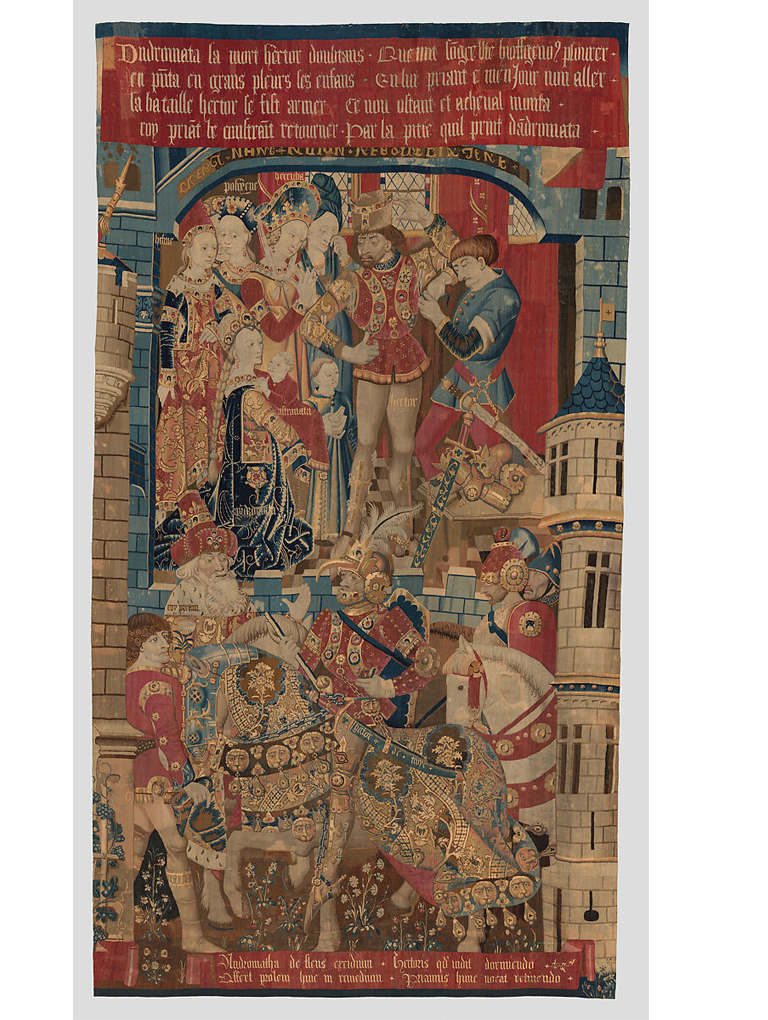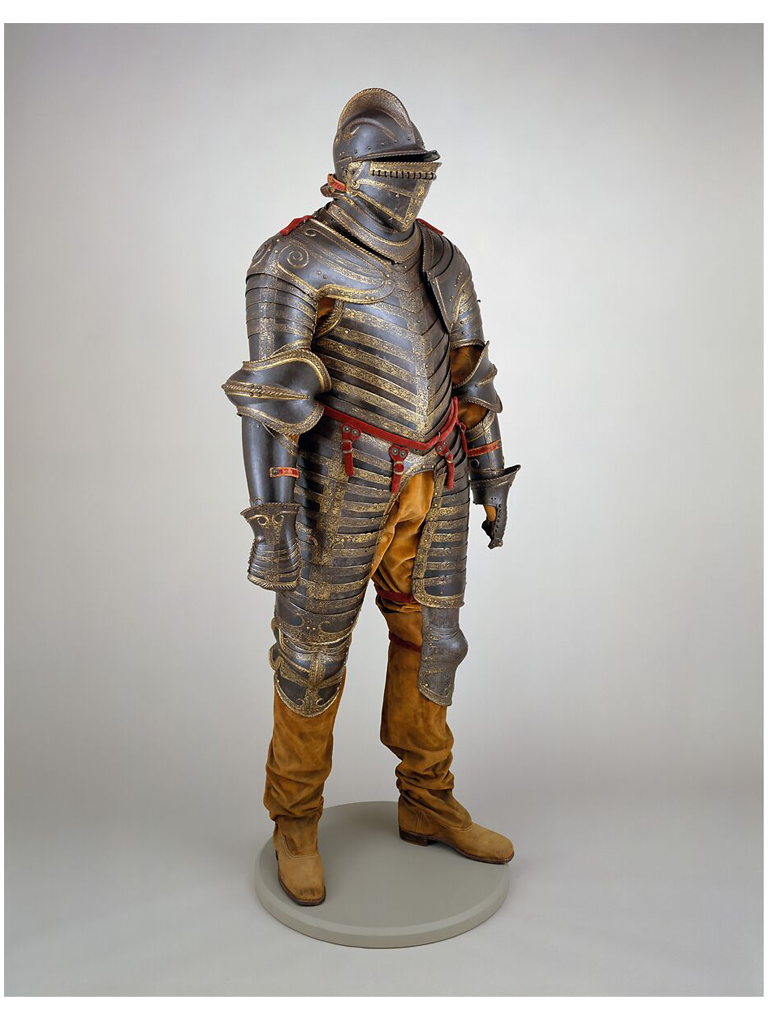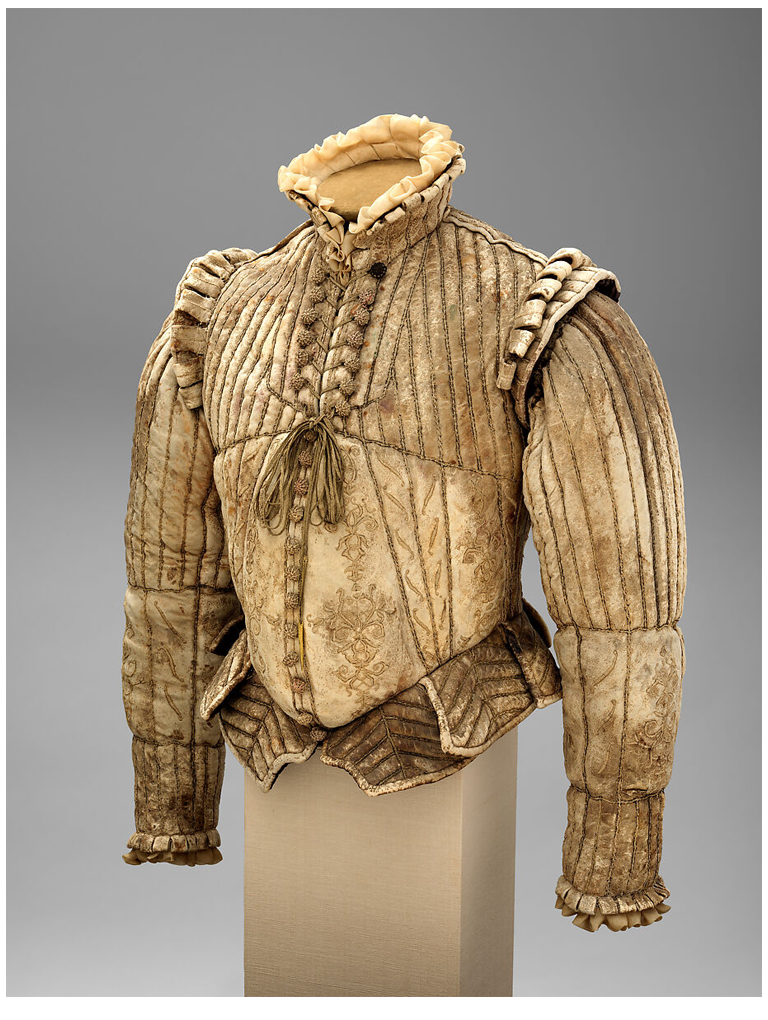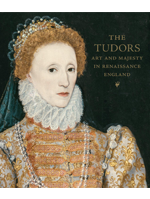
This review appears in West 86th Vol. 31 No. 1 / Spring–Summer 2024
Exhibition:
The Tudors: Art and Majesty in Renaissance England
Metropolitan Museum of Art, New York
OCTOBER 3, 2022–JANUARY 8, 2023
Cleveland Museum of Art
FEBRUARY 26–MAY 14, 2023
Legion of Honor, San Francisco
JUNE 24–SEPTEMBER 24, 2023
Catalogue:
The Tudors: Art and Majesty in Renaissance England
Elizabeth Cleland and Adam Eaker, with Marjorie E. Wieseman and Sarah Bochicchio
New York: Metropolitan Museum of Art, 2022
352 pp.; 300 color ills.
Cloth $65.00
ISBN 9781558396921
The Metropolitan Museum of Art’s hymn to the courtly arts, The Tudors: Art and Majesty in Renaissance England, culminates with a triumphant corpus of portraits of Elizabeth I (r. 1558–1603). Commanding a central axis of the Met’s vast galleries is the mighty and indomitable figure of the Virgin Queen, astride nation and globe, in Marcus Gheeraerts’s Ditchley Portrait, circa 1592 (cat. 119), a generous loan from the National Portrait Gallery, London. While the Met’s exhibition ostensibly disavows a simple teleological narrative, looking instead to characterize the Tudor era as a whole, it does not ignore the startling historical trajectory that began on Bosworth Field in 1485, when Henry Tudor defeated the Yorkist Richard III, and, in a brazen act of usurpation, became King Henry VII. Under his son, Henry VIII, and granddaughter, Elizabeth I, England would emerge from the late Middle Ages to occupy a significant role in European and world history. By the time of Elizabeth’s death in 1603, there were good reasons to endorse a core Tudor belief: “This Realme of Englond is an Impire.”1 For historians of Whiggish persuasion, the Tudors inaugurated a triumphal arc of national and imperial destiny. The Met’s spectacular exhibition makes a persuasive case that the visual arts were central to this lofty endeavor.
Shortly before the New York opening, the labels naming the lender of many key works, Queen Elizabeth II, attained an unexpected poignancy. Her death on September 8, 2022, marked the end of an era. The late sovereign’s accession in 1952 found many “Young Elizabethans” equating the two queens and envisaging a postwar English renaissance. But where the reign of Oriana transcended the chaos of the preceding years, presenting itself as a golden age, the second Elizabethan era, through no fault of the monarch, stumbled to a close with the disgrace of Boris Johnson and the near collapse of the British economy, owing to the incompetence of his successor Liz Truss. During the exhibition’s run, past and present met in an uncomfortable oxymoron, glorious Tudor hubris abutting squalid Tory nemesis.
The Met’s curators, Elizabeth Cleland and Adam Eaker, wisely eschew presentism, both in their well-wrought, informative essays and in the crisp and fully annotated entries for each work that give the accompanying catalogue lasting value. Despite the show’s adoption of an apt rhetoric of scholarly distance, however, its underlying concerns retain urgent and uncanny resonances with the present, well beyond the coincident naming of two queens regnant. For the exhibition is premised on the generative web of cultural exchange between England and the Continent, in implicit rebuttal of the dispiriting, xenophobic isolationism of the Brexit era.
The Tudors: Art and Majesty in Renaissance England stages an elegant dance between insularity and cosmopolitanism that continued unabated from 1485 to 1603 and, indeed, for centuries beyond. Cleland’s introductory essay, tellingly titled “England, Europe, and the World: Art as Policy,” presents the arts of the Tudor court as being “fully implicated in the exchanges of objects and ideas that defined the European Renaissance. To furnish their palaces, the Tudor monarchs relied on the commercial acumen and technical skill of itinerant artists and craftspeople, many of them refugees from war and religious persecution; they enjoyed extraordinary access via dealers and agents to the best of European luxury production, whether Italian velvets or Flemish tapestries” (17). The thesis is explored further in a second persuasive catalogue essay, also by Cleland, “Honing the Tudor Aesthetic,” which argues for an engaged English participation in European intellectual and visual trends throughout the long reign of the dynasty. Cultural influences from the Continent (execrated, like refugees and economic migrants, by the dominant right-wing press in Britain today) were the lifeblood of Tudor culture.

The exhibition’s explicit celebration of internationalism takes gripping visual form through the opening evocation of early Tudor palace interiors, replete with gold-embroidered Venetian velvet and finely wrought tapestries from the Low Countries (fig. 1). One of Henry VII’s earliest and most extravagant commissions was a complete set of The Story of Troy tapestries, now attributed to the “Coëtivy Master,” seemingly customized with red-and-white Tudor rose motifs.2 Visitors are greeted by two bronze angels and a massive candelabrum cast in London by the Florentine sculptor Benedetto da Rovezzano for the tomb of Cardinal Wolsey. These erudite manifestations of Renaissance taste were appropriated, after Wolsey’s fall, by Henry VIII for his own tomb, a vainglorious monument that was never completed. An indexical link between that very particular English body and the finest European craftsman can be found in a suit of armor from Milan or Brescia, fashioned in etched and gilded steel (fig. 2). It was shaped to fit the formidable height and expanding girth of Henry VIII in middle age.

An opening section, “Inventing a Dynasty,” articulates its thesis with considerable panache: the main characters are introduced through a cluster of distinguished portraits, while a superb range of objects provides both iconographic and material context. This opening salvo sees the massive form of Henry VIII compressed, through the unique artfulness of Hans Holbein the Younger (1497/1498–1543), into a panel just less than 11 by 8 inches (27.9 by 20.3 centimeters), his haughty three-quarter profile and incipient snarl daring anyone to belittle him. The violent pendulum swing from the extreme Protestantism of the young Edward VI’s short reign to fiercely orthodox Catholicism under Mary I is dramatized through the juxtaposition of portraits. In a large panel dated 1554, Hans Eworth (ca. 1525–after 1578) places Mary frontally before a red wall-covering, her body flattened under layers of heavy textile, her face severe and defensive. A tender profile portrait of the boy king Edward, plausibly attributed to Guillem Scrots and probably based on a drawing by Holbein, employs floral symbolism and an emblem of the sun to hint at a Protestant efflorescence that he did not live to see.
Uncanny discontinuities of scale abound, as they did at the Tudor courts; the exhibition is premised on both the massive and the miniature. A highlight is the long Luttrell Table Carpet, here dated to after 1520 and superbly preserved. Its distinctive knotwork pattern suggests an English design, woven with a technical accomplishment that reveals the work of Flemish weavers, possibly the emigré community at Southwark on the south bank of the Thames. The very essence of Tudor ideology, however, is enshrined in a much smaller object: a tiny portrait of Elizabeth embroidered on a satin panel barely bigger than a man’s hand, from a private collection. The royal body, portrayed with metal wrapped threads and seed-pearls, emerges organically from among the parterres of a formal garden, with green hills in the distance. Elizabeth here is the very stuff of England, immanent in the land, a natural and immutable feature of this other Eden.
The focus on continuities in patronage and material culture across the Tudor age threatens to overwhelm what, according to Whig histories, is the most significant of the dynasty’s achievements: the English Reformation, a rupture that the Victorians considered to be a precondition for the birth of a modern England, one casting off the Catholic yoke.3 For those looking closely, England’s renunciation of the Roman church is visibly manifested in such portentous objects as Lucas Hornebout’s vividly illuminated title page to the Great Bible of 1540. Henry, enthroned as Supreme Head of the Church of England, sits directly beneath, and in active dialogue with, God the Father. This officially sanctioned publication followed only three years after the circulation of Myles Coverdale’s unauthorized English translation of the Bible, a work dedicated to Henry, whose vibrant title page by Holbein is also exhibited. Coverdale’s translation was spirited into existence through the connivance of Thomas Cromwell, a figure barely present in the exhibition, to the audible perplexity of the many visitors enticed to the Met as readers of Wolf Hall, Hilary Mantel’s novel of 2009.
Given the overall chronological plan of the show, which concludes with Elizabeth’s old age, it does seem odd, two thirds of the way through, to encounter a spectacular manifestation of the Catholicism of the early Tudors, a cope of Florentine manufacture from circa 1495, bearing a scrolling vine motif, the Tudor rose, and the portcullis motif of Henry VII’s mother Margaret Beaufort. Surrounded by Elizabethan materials, this object could be taken to imply that there was business as usual in English churches after the Religious Settlement of 1558. But such popish vestments were mainly destroyed or drastically recut by the reformers: the few that survive intact were either smuggled out of England or tucked away for centuries in the recesses of the homes of recusant gentry. Religion, of course, remained paramount. Tudor magnificence was only enhanced by the sovereign’s role as Supreme Head and (from 1558 to the present) Supreme Governor of the Church of England, not least because of the rich resources released (or stolen, depending upon one’s point of view) during the dissolution of the monasteries.
It will be no surprise to any who saw the exhibition Holbein: Capturing Character at the Morgan Library, New York, earlier in 2022 that the drawings and paintings of the German-born artist, in England from 1526 to 1528 and again from 1532 to 1543, command a central position. He appears here not only as a portraitist of astonishing virtuosity but also as the author of refined designs for goldsmiths’ work and of a chimneypiece enmeshing Henry’s initials alongside reliefs of Charity and Justice within a splendid ensemble of architectural ornament. A selection of portrait drawings, modest in number but formidable in presence, stand in juxtaposition with the justly celebrated portrait of Thomas More, a rare loan from the Frick Collection, New York, his eyes raised just above the viewer’s head, a man of mind raptly contemplating some profound ethical dilemma. From the Mauritshuis, the Hague, and to be seen in New York only, is the boldly conceived square canvas, its background a luminous teal, in which the pensive figure of Robert Cheseman, falconer to the king, is seen with a hooded peregrine. His hand gently caresses the precious bird’s breast, even as its sharp talons and beak speak of nature’s power. The tense, drawn face of Jane Seymour appears in a drawing undoubtedly made from life, the deposit of a psychological interaction as resonant today as five centuries ago. She chose (we learn) an English gabled hood in contrast to the French style preferred by Anne Boleyn. Visitors to the Cleveland iteration of the exhibition will be uniquely privileged to see this pale, fragile drawing of a strong woman in juxtaposition with the robust oil version, from Vienna—a work of peerless virtuosity that also records clothing and jewelry from the queen’s wardrobe, charting the ineffable geometry of the gilded stitching in her sleeves. A year after it was painted, following complications during the birth of Edward, Henry’s heir, she was dead.
Holbein’s work has a canonical currency and a Hanseatic flavor, its Englishness a mere contingency of patronage and the politics of exile. As such, it fits well the exhibition’s insistently cosmopolitan refashioning of the Tudors. Such a view pits itself against notions deeply enshrined in art history, as in Nikolaus Pevsner’s The Englishness of English Art, which focuses on the early years of the second Elizabeth’s reign, and the subsequent writings of Sir Roy Strong.4 A distinctly insular but no less virtuosic counterexample to Holbein is Nicholas Hilliard (ca. 1547–1619), a central figure in Strong’s work. The major contribution of Hilliard, limner to Queen Elizabeth I, was as a miniature painter, a genre that presents challenges to the designers of blockbuster exhibitions. At the Met, alas, a breathtaking line-up of these tiny works was almost invisible, owing to reflections. This most personal and haptic of forms of painting longs to be cradled in the hand or pinned to an embroidered lapel. Hilliard’s playful and exquisitely decorative art does suggest an aesthetic distinctive to the English court, preoccupied as it is with esoteric iconography replete with emblems and puns, deriving, as Eaker notes, “from a competitive climate in which wit represented a potential social asset” (111).
Gender is an insistent but understated presence in the exhibition and catalogue, notably in the third section, “Courtly Identity.” There is no avoiding the royal codpiece, an unmistakable signature of Henry VIII’s self-fashioning, just as the insistence first on marriageability and, later, on the politics of virginity mark out the representations of his younger daughter Elizabeth, who by the end of the show reaches the status of a celestial being. Eaker’s essay “Fashioning the Courtier” directly addresses the importance of male dress at “the eroticized court of Queen Elizabeth I, where masculine beauty and athletic prowess could launch a political career” (195). The text reveals that a coat of satin might say as much about a nobleman as a coat of arms. The exhibition offers up a tasty array of winsome young men in various conditions of melancholy, their bodies adorned with sumptuous fabrics, often disporting an artfully turned calf or a fashionable “peascod belly,” the latter illuminated by the display of a fencing doublet, circa 1580, from the Met’s own collection (fig. 3). Visitors, however, are largely left to discern for themselves the homoeroticism, the palpable queerness, that seems so central a component of this courtly finery.

What, finally, of the “Impire” that was coterminous with the “realme of Englond”? The inclusion of a striking portrait of ‘Abd al-Wahid bin Mas’ood bin Mohammad ‘Annouri, the secretary of Sultan Ahmad-al-Mansur of Morocco, hints at the worlding of the Tudor court, a center of international diplomacy but also of a geographical curiosity tinged with imperial aspiration. A view of the Tudors from the New World, presented at a tipping point in the history of globalization, might be expected to acknowledge the Tudors’ brutal campaigns in Ireland, their trans-Atlantic colonial ambitions, and the peregrinations of privateer-explorers such as Francis Drake. Yet exhibition and catalogue pass up the opportunity to consider the Tudor period as the foundational moment of “Atlantic Britain.” This despite a substantial body of materials, such as John White’s haunting watercolors of the Roanoke colony at the British Museum, London, that might have illuminated the topic, allowing a European story to become a global one with profound and, in many ways, catastrophic consequences.5 Though eschewing larger transregional perspectives, The Tudors enshrines a subtle, scholarly meditation on aesthetics and governance in an early modern England that moved from the peripheries to the center of European culture, even as it also offers a spectacle of irresistible visual delight.6
Tim Barringer
Tim Barringer is the Paul Mellon Professor of the History of Art in the Department of the History of Art at Yale University, New Haven, Connecticut.
- 1 Quoted in Jessica S. Hower, Tudor Empire: The Making of Early Modern Britain and the British Atlantic World, 1485–1603, Britain and the World (Cham, Switzerland: Palgrave Macmillan, 2020), https://doi-org.yale.idm.oclc.org/10.1007/978-3-030-62892-5_1.
- 2 Catalogue contributor Sarah Bochicchio is credited with the discovery of Tudor roses in the tapestry (22).
- 3 For an alternative reading, see Eamon Duffy, The Stripping of the Altars: Traditional Religion in England, 1400–1580 (New Haven, CT: Yale University Press, 2005).
- 4 Nikolaus Pevsner, The Englishness of English Art: An Expanded and Annotated Version of the Reith Lectures Broadcast in October and November 1955 (London: Penguin, 1988).
- 5 Kim Sloan, with contributions by Joyce E. Chaplin, Christian F. Feest, and Ute Kuhlemann, A New World: England’s First View of America (London: British Museum, 2007); and Michael Gaudio, Engraving the Savage: The New World and Techniques of Civilization (Minneapolis: University of Minnesota Press, 2008).
- 6 The attempt to navigate the relation between Britain and the globe over a longer period, in the same museum’s British galleries, is the subject of Tim Barringer, “Racial Capitalism and the Ragged Man,” in “The Chelsea Porcelain Case, British Galleries, the Metropolitan Museum of Art,” ed. Iris Moon, special issue, British Art Studies, no. 21, https://doi.org/10.17658/issn.2058-5462/issue-21/oneobject.

